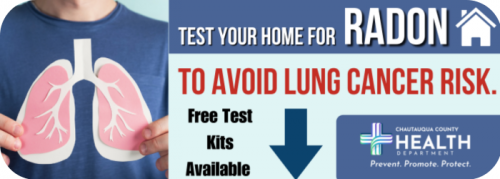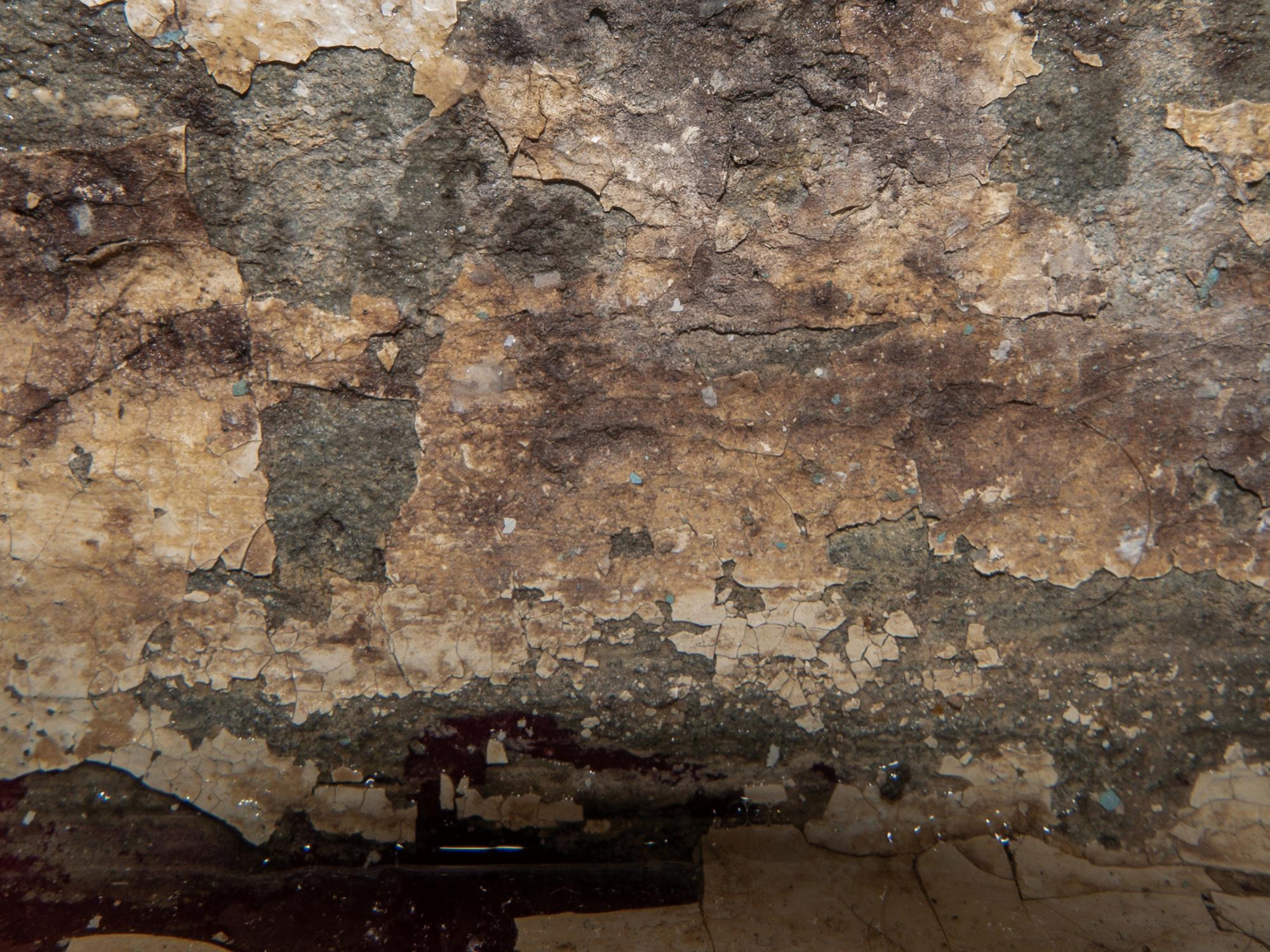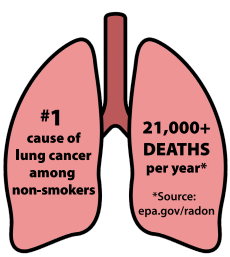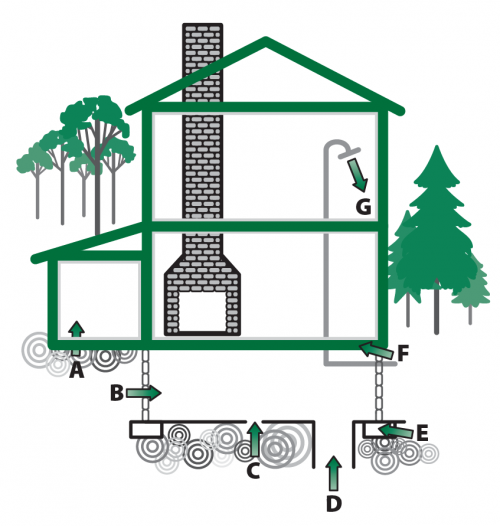
What you should know about Radon:
Radon is common in Chautauqua County
Exposure increases lung cancer risk
Occurs naturally and is a colorless, odorless gas
Can accumulate in basements and lower floors
Radon is the leading cause of lung cancer among nonsmokers, and the second leading cause of lung cancer deaths overall. The EPA estimates radon exposure results in approximately 21,000 lung cancer deaths annually.
Radon Exposure
Radon is a radioactive gas that results from the natural breakdown of uranium in soil, rock, and water. The risk of radon exposure can therefore be associated with the type of soil and bedrock that is present where you live. Radon cannot be seen, smelled, or tasted. The gas can enter any type of building through cracks in solid floors, construction joints, gaps in suspended floors, pipe openings, and in some cases through the water supply. Even small amounts of radon, from soils and bedrocks with low uranium content, can build up to be a big problem.
How Does Radon Get In?
- Cracks in concrete slab or foundation
- Pores and cracks in concrete blocks
- Slab-footing joints
- Exposed soil (sump pump pits or areas without concrete)
- Loose fitting pipes
- Groundwater such as well water
Major Radon Entry Routes:
Radon Level Variables
Radon levels are dependent upon a number of variables, for this reason the Health Department strongly recommends everyone test their home, even if you are not in a high risk area.
Resources
USEPA What is the EPA’s Action Level for Radon and What Does It Mean?















